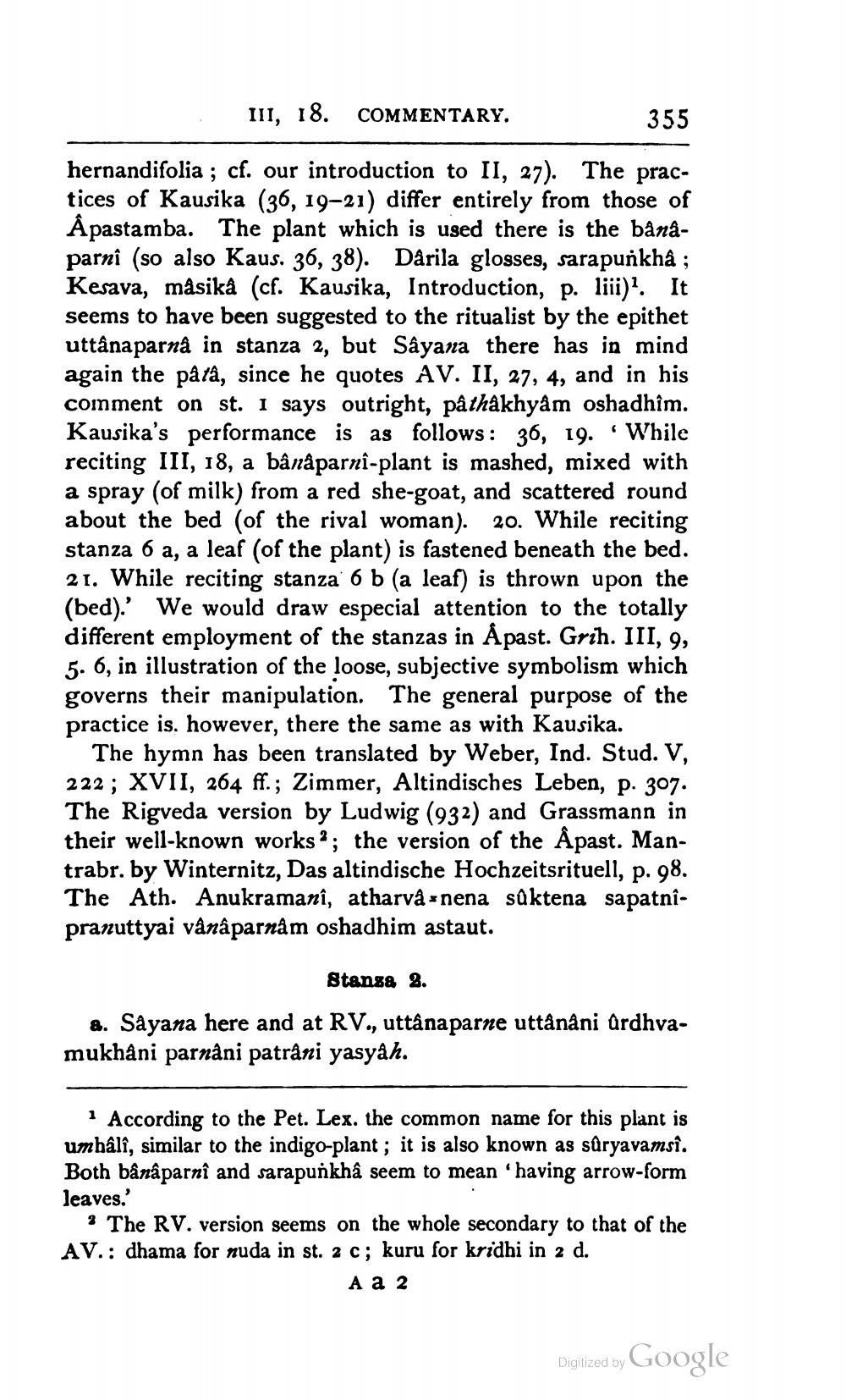________________
III, 18. COMMENTARY.
355
hernandifolia ; cf. our introduction to II, 27). The practices of Kausika (36, 19-21) differ entirely from those of À pastamba. The plant which is used there is the bånaparni (so also Kaus. 36, 38). Darila glosses, sarapunkhâ ; Kesava, mâsikå (cf. Kausika, Introduction, p. liii)? It seems to have been suggested to the ritualist by the epithet uttâna parna in stanza 2, but Sâyana there has in mind again the på tå, since he quotes AV. II, 27, 4, and in his comment on st. 1 says outright, pâthakhyam oshadhim. Kausika's performance is as follows: 36, 19. While reciting III, 18, a bânåparnî-plant is mashed, mixed with a spray (of milk) from a red she-goat, and scattered round about the bed (of the rival woman). 20. While reciting stanza 6 a, a leaf (of the plant) is fastened beneath the bed. 21. While reciting stanza 6 b (a leaf) is thrown upon the (bed).' We would draw especial attention to the totally different employment of the stanzas in Åpast. Grih. III, 9, 5. 6, in illustration of the loose, subjective symbolism which governs their manipulation. The general purpose of the practice is, however, there the same as with Kausika.
The hymn has been translated by Weber, Ind. Stud. V, 222 ; XVII, 264 ff.; Zimmer, Altindisches Leben, p. 307. The Rigveda version by Ludwig (932) and Grassmann in their well-known works?; the version of the Åpast. Mantrabr. by Winternitz, Das altindische Hochzeitsrituell, p. 98. The Ath. Anukramanî, atharva - nena sûktena sapatnîpranuttyai vânâparnám oshadhim astaut.
Stanga 8.
8. Sayana here and at RV., uttânaparne uttânâni ardhvamukhâni parnäni patrâni yasyâh.
1 According to the Pet. Lex. the common name for this plant is umhâlî, similar to the indigo-plant; it is also known as sûryavamsî. Both bånâparnî and sarapunkhâ seem to mean 'having arrow-form leaves.'
3 The RV. version seems on the whole secondary to that of the AV.: dhama for nuda in st. 2 c; kuru for kridhi in 2 d.
Аа 2
Digitized by Google




